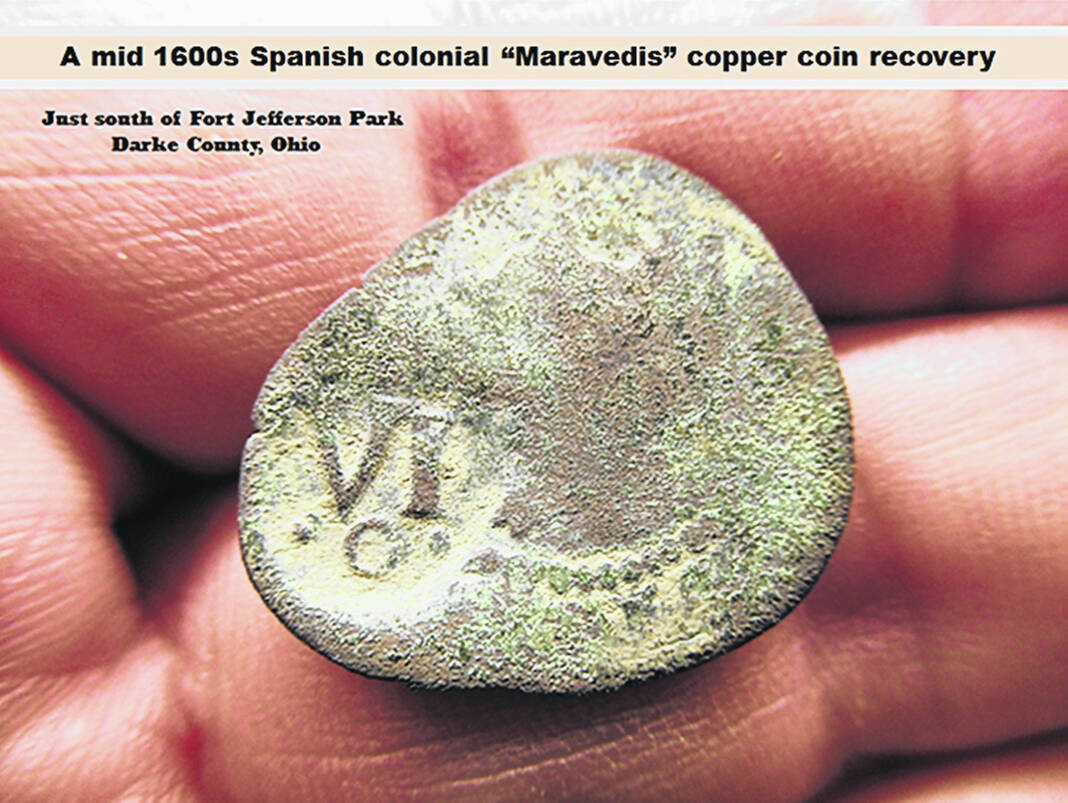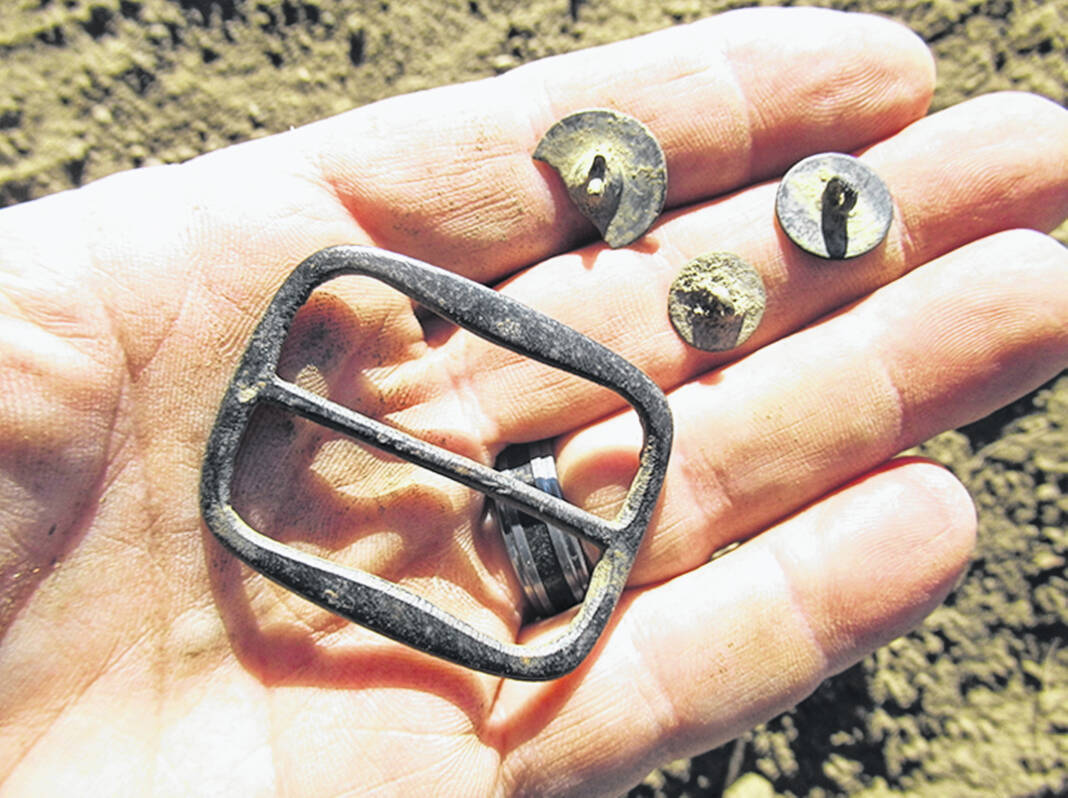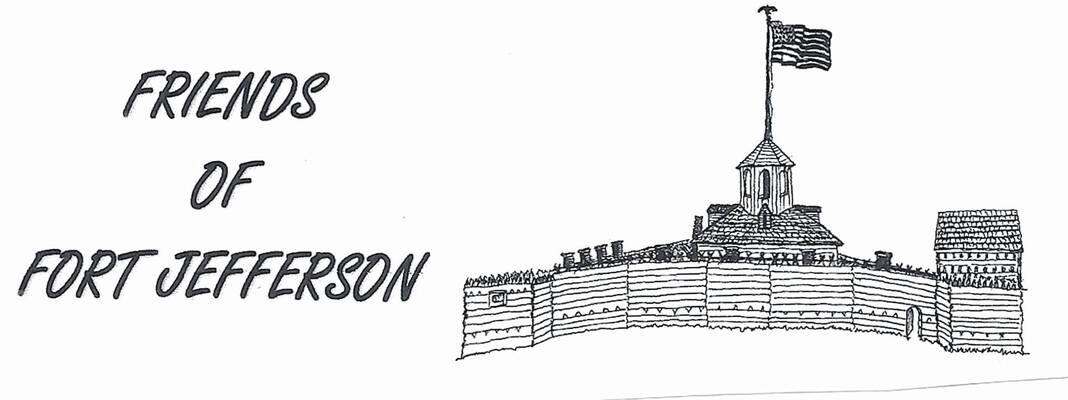
This Maravedis coin was discovered and it is possible it dropped by a trader before Ft. Jefferson was established.
Provided photo

The remnants of a sling buckle was found during the exploration of the Fort Jefferson area.
Provided photo

By Cait Clark
Friends of Ft. Jefferson
GREENVILLE — On the weekend of Oct. 28, the Friends of Fort Jefferson and the Wayne’s Legion Research Group organized an excavation of the field immediately south of where Fort Jefferson once stood. The project was open for the public to attend and drew in many interested historians and novices, some coming from as far away as Columbus and Indianapolis. Several artifacts were recovered and cataloged, each one giving us another piece to the story that makes up Ohio’s forgotten outpost, Fort Jefferson.
The land on which the excavation took place was purchased from the Denniston family following their gracious allowance of digging activity to commence on the property in previous years. Prior to the dig itself, it was decided that the fencerow bordering the fort site would be the focal point of the excavation. Accordingly, the area immediately south of the fencerow was measured into 17 sections as a means of keeping track of where the relics were found once digging began.
Multiple artifacts were recovered during the two-day dig, scattered throughout both the grid-organized area and the rest of the field. Despite them all being significant additions to the fort’s history, no singular one gives any indication of specific events which took place at the fort. Further study and research are needed before any explanations for their presence can be
made.
Two significant artifacts which were found during an initial detection scan were that of a Spanish Maravedis coin and a crumpled collar plate from a period neck stock. The coin was found near a natural spring located in grid section 13 and, having been minted in 1636, would have been in circulation nearly 100 years before the birth of George Washington. Therefore, this Maravedis coin pre-dated the fort and may have arrived in the area by way of trade with Native Americans.
The second significant find from the 2022 spring scan was that of the crumpled collar plate in grid section 2. This collar plate would’ve been used to attach the ends of a soldier’s neck stock during Fort Jefferson’s fort period. It is theorized that such plates were discarded by the men as they were uncomfortable to wear during the long hours of strenuous labor that was required of soldiers on the Ohio frontier.
During the dig a third significant find was recovered: a sling buckle. This unassuming looking sling buckle has a unique use and interesting origin. Sling buckles such as the one found at Fort Jefferson were manufactured during the Revolutionary War and following the war’s end, they became surplus. These surplus sling buckles were attached to a cartridge belt to be used by soldiers on the western Ohio frontier.
Other finds at the Fort Jefferson dig included dropped mucket balls, fired balls, buckshot, cuff buttons and lead fragments. A Spanish Real coin dating between 1770 and 1790 was found at the far end of the field. A fire pit was also discovered and excavated in the 9’ grid section.
Careful sifting of the dirt removed from this fire pit feature revealed fragments of bone, dobbing, and charred wood. A broken piece of a French gun flint was found nearby. It is difficult to determine the time period from which the fire pit originated as it could be historic or even prehistoric. The importance and implications of these finds will be explored further later on.
A final artifact, one which was found by a young member of the public, Levi Olson, was that of a comb fragment. The exact period of the comb’s origin is presently unknown, but it was estimated on site that it could be from Ft. Jefferson’s time period. Whatever its origin, the discovery is a perfect example of how the public’s enthusiastic involvement continues to aid in the recovery of Fort Jefferson’s forgotten history.
Following such a successful weekend, it is no surprise that the Wayne’s Legion Research Group and the Friends of Fort Jefferson have already cultivated plans to continue working in the area next summer. On the east side of the present dig site’s Sectionl, between the pine trees and State Route 121, there is another unexplored area that was purchased along with the rest of the property. This area was part of where Arthur St. Clair’s army camped during the fort’s initial construction. Though no date for the next dig has yet been released, we await in suspense to see what else will be discovered at Ohio’s “Forgotten Outpost.”




